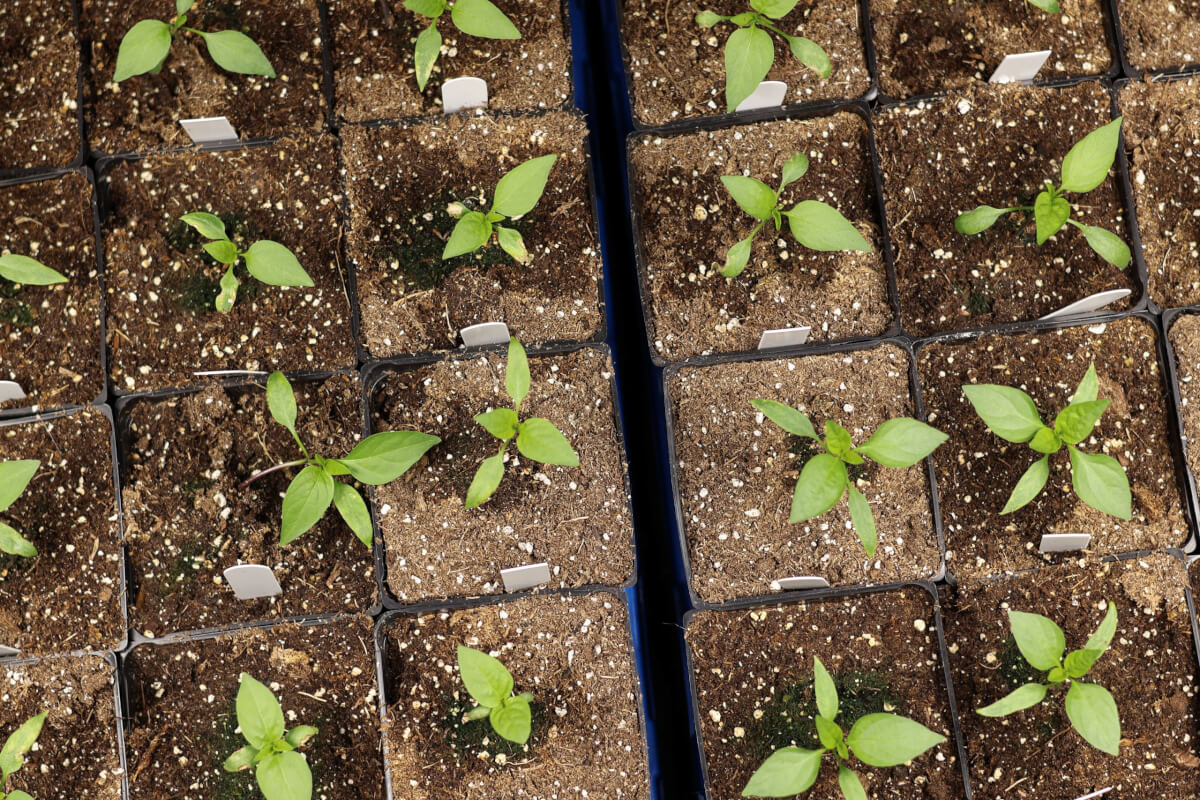The amount of soil you offer your seedlings and young plants can really matter! A root bound plant will generally be “held back” from growing further, it will ultimately “stunt” it to some degree. While most plants will easily recover from this, it does fundamentally place some limitations on your plants. People often ask us how we get such a nice looking garden off the ground so quickly once we’re in the ground, this topic is one of our trade secrets!
We generally like to aim for a concept we’ve termed “continual growth” as part of our general plant raising strategy. This means continually offering our seedlings and young plants the soil they need to keep growing. Since we’re raising our own here, we can fundamentally control this! Our goal is not to make profit, or grow the most plants. Our goal is to raise the best plants we possibly can!
In general, we use much larger pot sizes than you’d see used at commercial greenhouses. The 606 jumbo insert we heavily use is rarely used in the commercial greenhouse, typically such a size would be reserved for rather large plants. Yet, this large insert size is our “minimum standard” container size and it just goes up from there! We’ll tell you, our plants use every bit of soil we give them! We also don’t hesitate to transplant into even larger containers (typically ~2.3 quart, or 5.5 inch square pots) if our large plants are looking like they could use more soil.
For the home-scale grower, providing your plants more soil has tangible benefits beyond just slightly larger, more mature garden starts. For us, the biggest benefit is not having to water our plants nearly as frequently! If you’re struggling with your plants drying out quickly or you have to water every single day, one of the best things you could do is use a larger container! One of the other major benefits is that more roots will generally mean a faster “take off” once we do get our plants into the actual garden. We’ve also observed, in plants like artichoke, that providing “continual growth” can mean the difference between a mature artichoke at the end of the season, or not.
Sure, there are some tradeoffs to this general approach. For example, it requires a little bit more space that you need to provide for. It also has slightly higher soil costs. Honestly, though, it’s a negligible additional cost at smaller growing scales when you really put your eyeballs on it. Plus, most of it goes into your garden soil anyway, providing long term benefits like soil drainage and water retention.
When you get to a more advanced level as a grower, you can essentially predict your plant’s actual soil needs. This allows you to have a pre-planned strategy for the entire lifecycle of your seedlings and young plants. It informs you of what pots you might want to use, when you need to pot up and overall how much growing space you need. We talk about this “advanced level” a lot in our growing from seed guides, because it takes a fair bit of experience to actually “get there.” That’s one of the main things we’re trying to do here as northern growing mentors, short circuit your learning curves!


